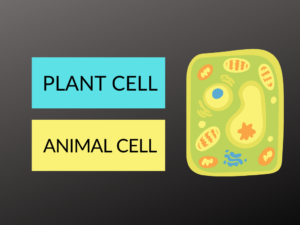Difference Between Autologous and Allogeneic Stem Cell Transplant
Introduction
Stem cell transplant is a medical procedure that involves replacing damaged or diseased cells in the body with healthy stem cells. There are two main types of stem cell transplants: autologous and allogeneic. Understanding the differences between these two types is crucial in determining the most suitable treatment option for patients.
What is Autologous Stem Cell Transplant?
Autologous stem cell transplant, also known as an autograft, refers to a procedure where the patient’s own stem cells are collected before intensive treatment, such as chemotherapy or radiation therapy. These collected stem cells are then frozen and stored for later use. After the intensive treatment has been completed, the stored stem cells are thawed and returned to the patient’s body to help rebuild healthy cells.
Examples of Autologous Stem Cell Transplant:
- Patients with certain types of cancer, such as lymphoma or multiple myeloma, undergoing high-dose chemotherapy.
- Patients with autoimmune diseases, such as multiple sclerosis or lupus, where the immune system attacks healthy cells.
- Patients with severe burns or other injuries that require tissue regeneration.
What is Allogeneic Stem Cell Transplant?
Allogeneic stem cell transplant, also known as an allograft, involves using stem cells from a donor who is a close genetic match to the patient. The donor’s stem cells are collected through a process similar to a blood donation. These donor stem cells are then infused into the patient’s body to replace damaged or diseased cells.
Examples of Allogeneic Stem Cell Transplant:
- Patients with leukemia, a type of blood cancer.
- Patients with diseases affecting the bone marrow, such as aplastic anemia or myelodysplastic syndrome.
- Patients with severe immune deficiencies.
Differences between Autologous and Allogeneic Stem Cell Transplant
Difference Area |
Autologous Stem Cell Transplant |
Allogeneic Stem Cell Transplant |
|---|---|---|
| Source of Stem Cells | Patient’s own stem cells | Donor’s stem cells |
| Matching Requirements | No need for a donor match | Requires a close genetic match between the donor and the patient |
| Graft-versus-Host Disease Risk | Lower risk | Higher risk |
| Relapse Risk | Higher risk | Lower risk |
| Treatment Availability | Widely available | Require suitable stem cell donor availability |
| Procedure Complexity | Less complex | More complex |
| Immune System Recovery | Faster recovery | Slower recovery |
| Chance of Long-Term Complications | Lower chance | Higher chance |
| Treatment Cost | Lower cost | Higher cost |
| Availability of Stem Cell Donor | No need for a donor | Need to find a suitable stem cell donor |
Conclusion
In summary, autologous and allogeneic stem cell transplants differ in terms of the source of stem cells, matching requirements, graft-versus-host disease risk, relapse risk, treatment availability, procedure complexity, immune system recovery, chance of long-term complications, treatment cost, and the need for a donor. The choice between these two types of transplants depends on various factors, including the patient’s condition, availability of a suitable donor, and overall treatment goals.
People Also Ask:
1. What are the advantages of autologous stem cell transplant?
Autologous stem cell transplant eliminates the risk of graft-versus-host disease, provides a faster immune system recovery, and does not require a suitable stem cell donor.
2. Can a family member be a donor for an allogeneic stem cell transplant?
Yes, family members with a close genetic match can be potential donors for an allogeneic stem cell transplant.
3. How long does it take to find a suitable stem cell donor for an allogeneic transplant?
Finding a suitable stem cell donor for an allogeneic transplant can take several weeks or even months.
4. What are the risks of graft-versus-host disease in allogeneic stem cell transplant?
Graft-versus-host disease occurs when the donor’s immune cells attack the patient’s healthy cells. It can cause a range of complications and requires close monitoring and treatment.
5. Is allogeneic stem cell transplant more effective than autologous stem cell transplant?
The effectiveness of the transplant depends on various factors, including the patient’s condition and the specific disease being treated. Each type of transplant has its own advantages and disadvantages.


